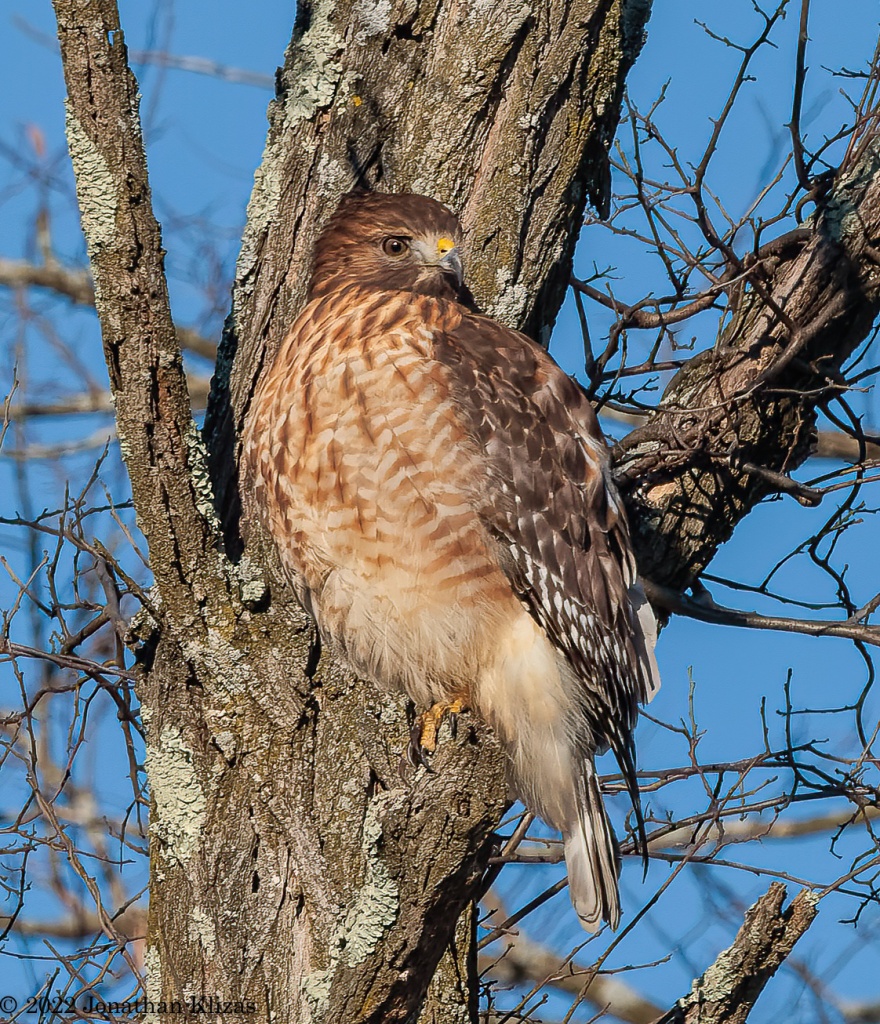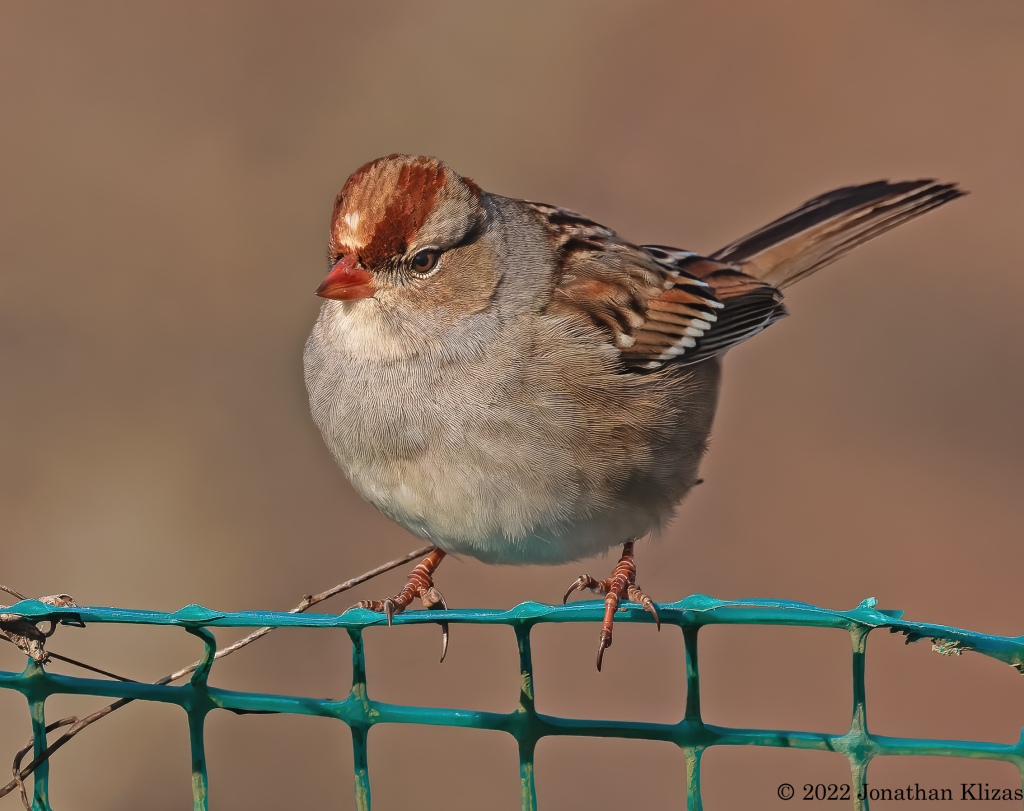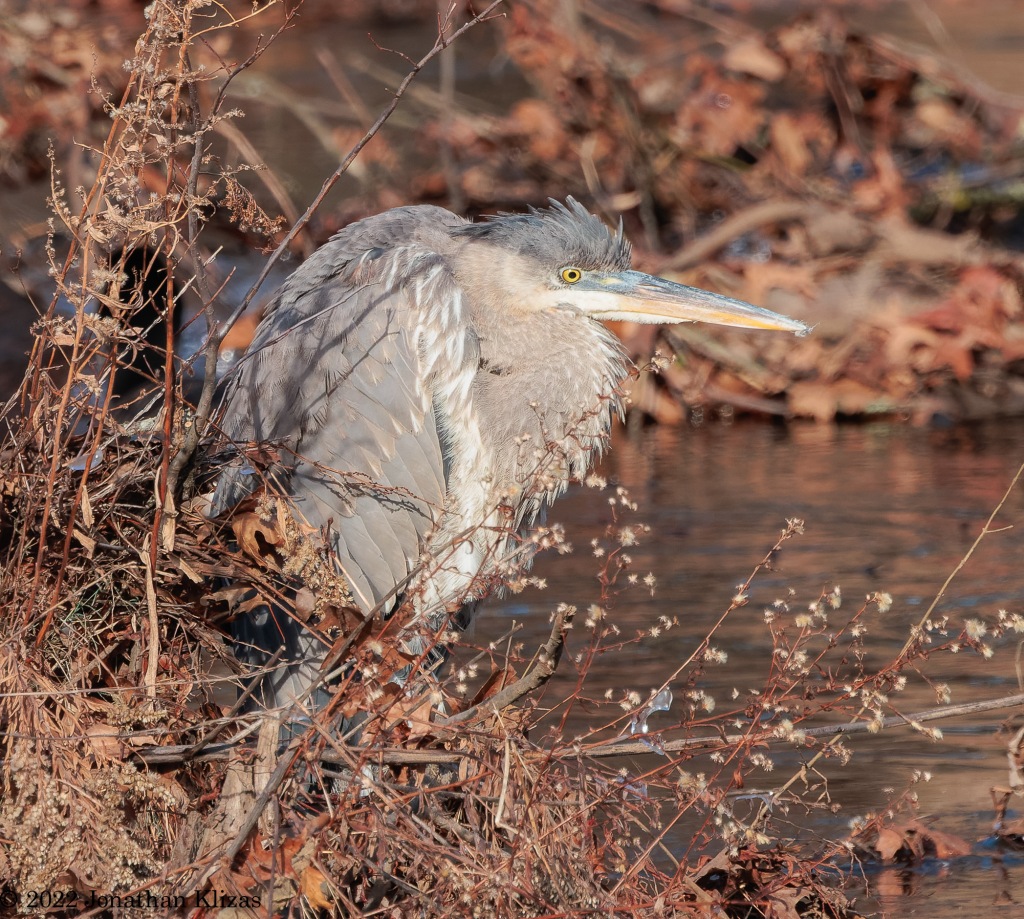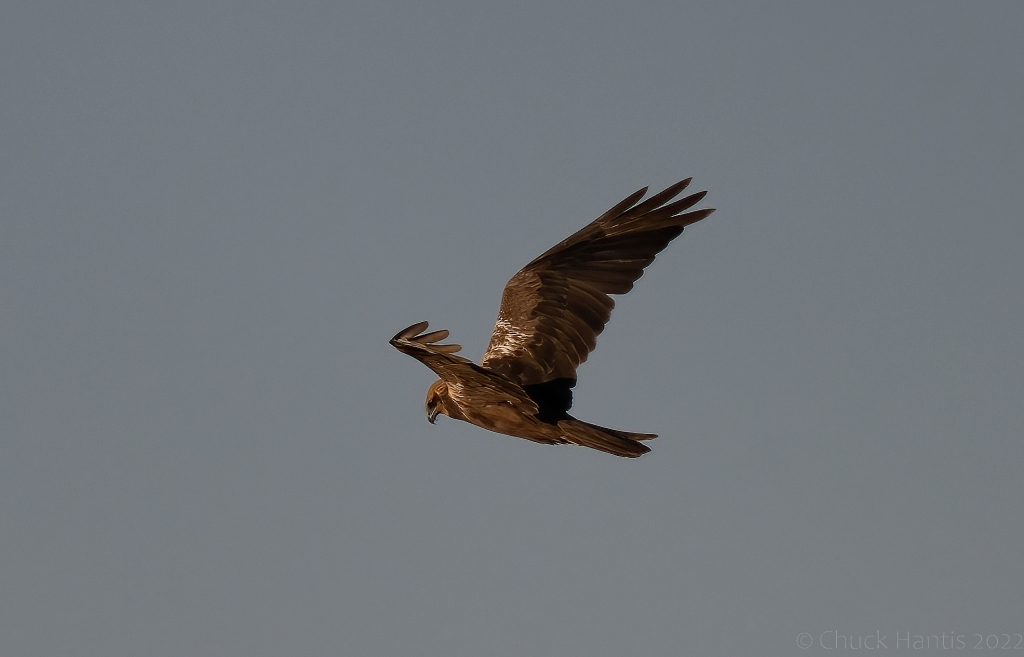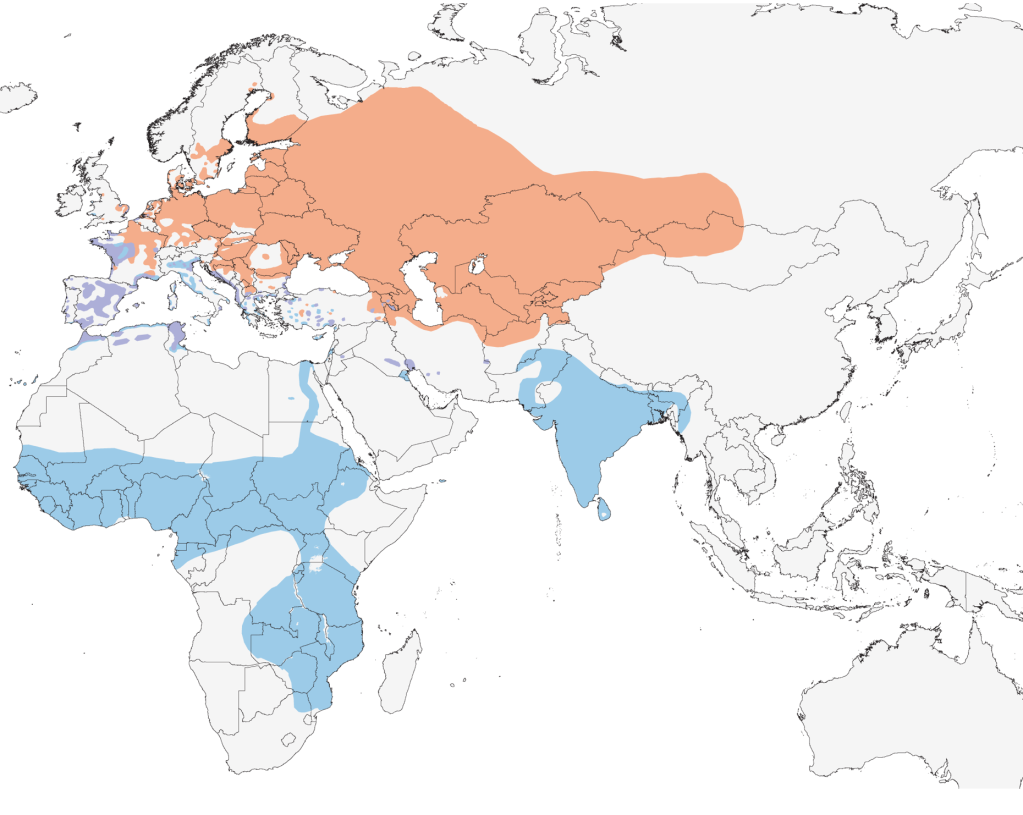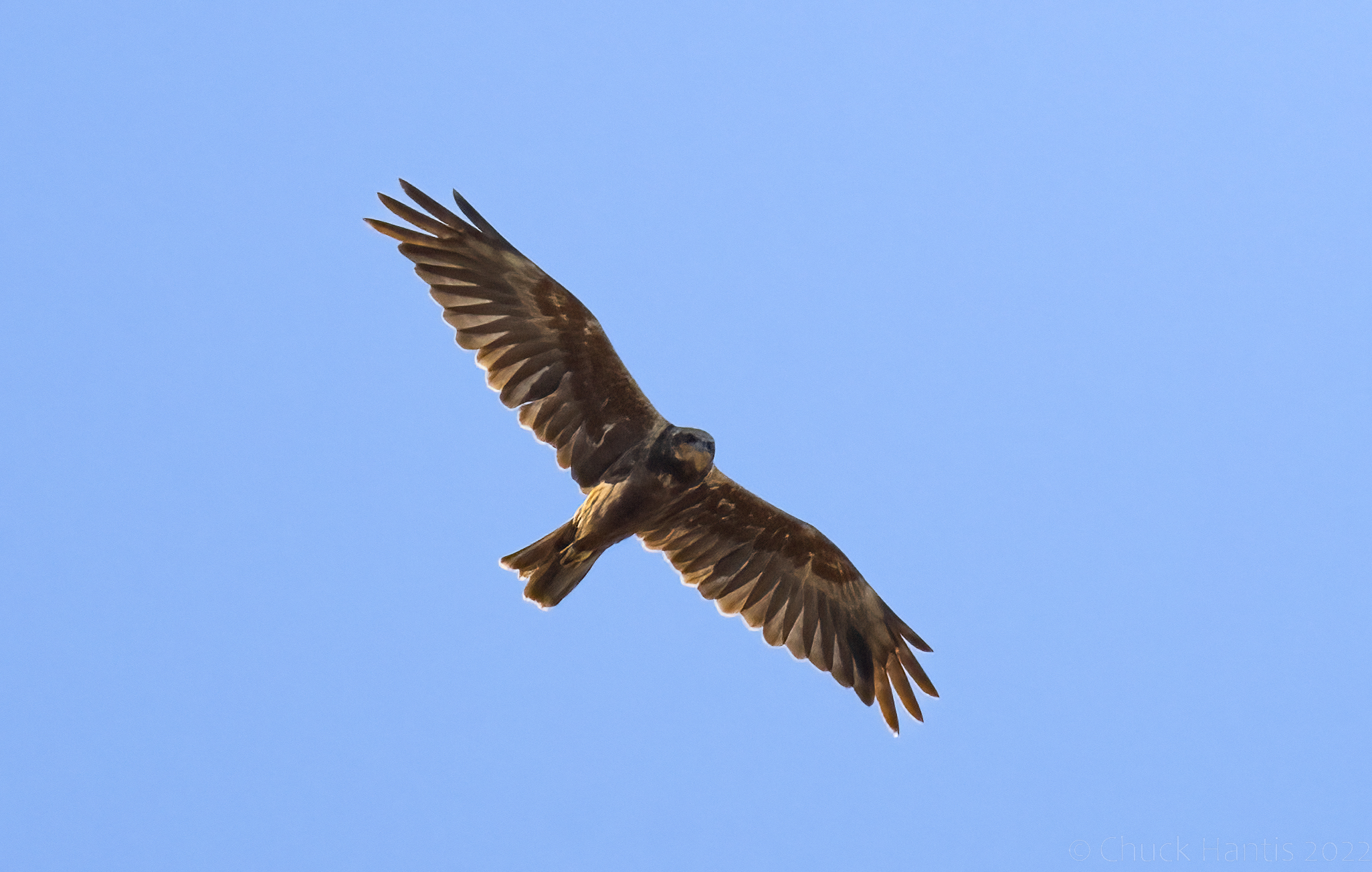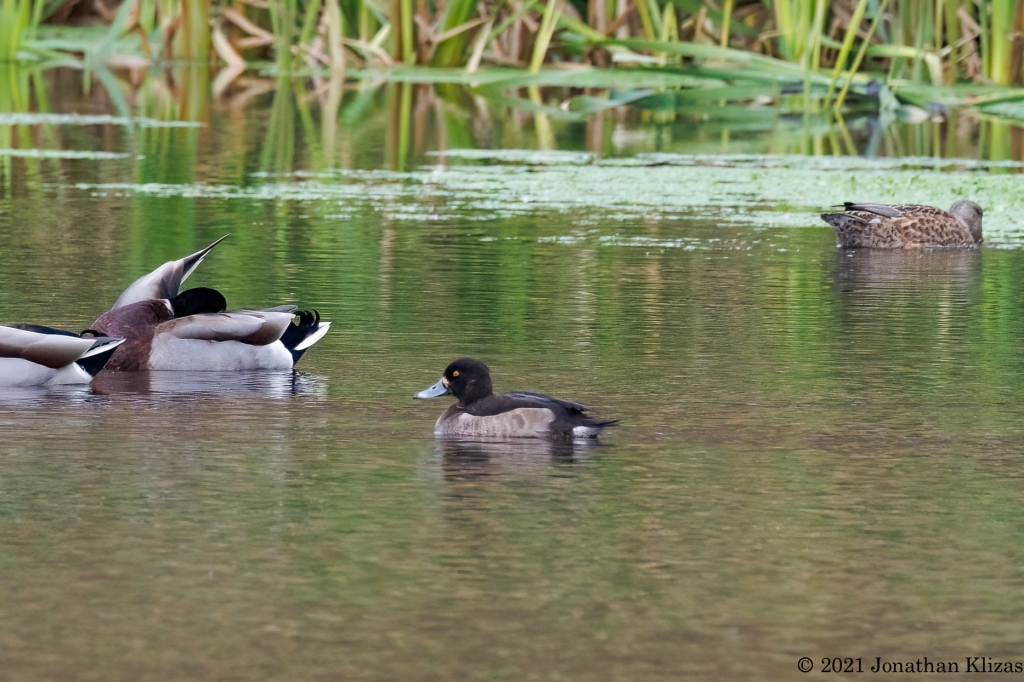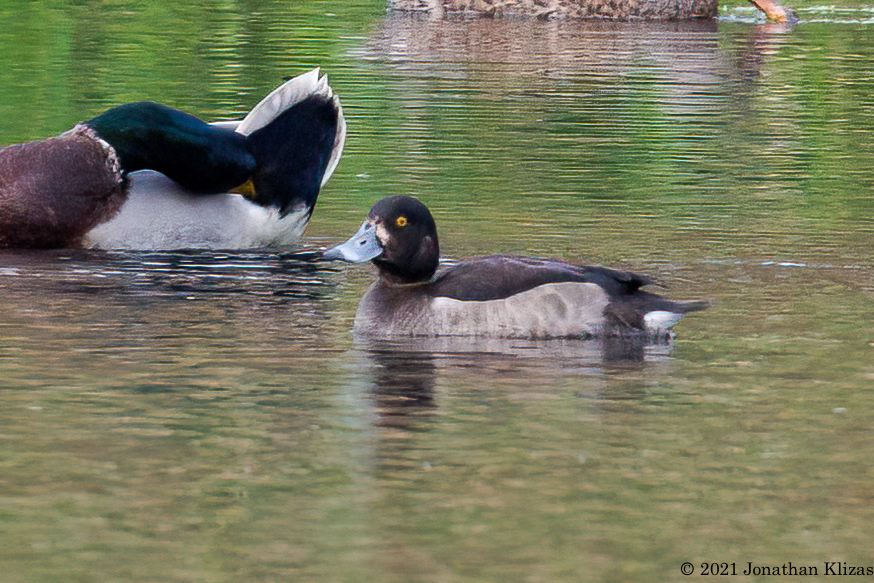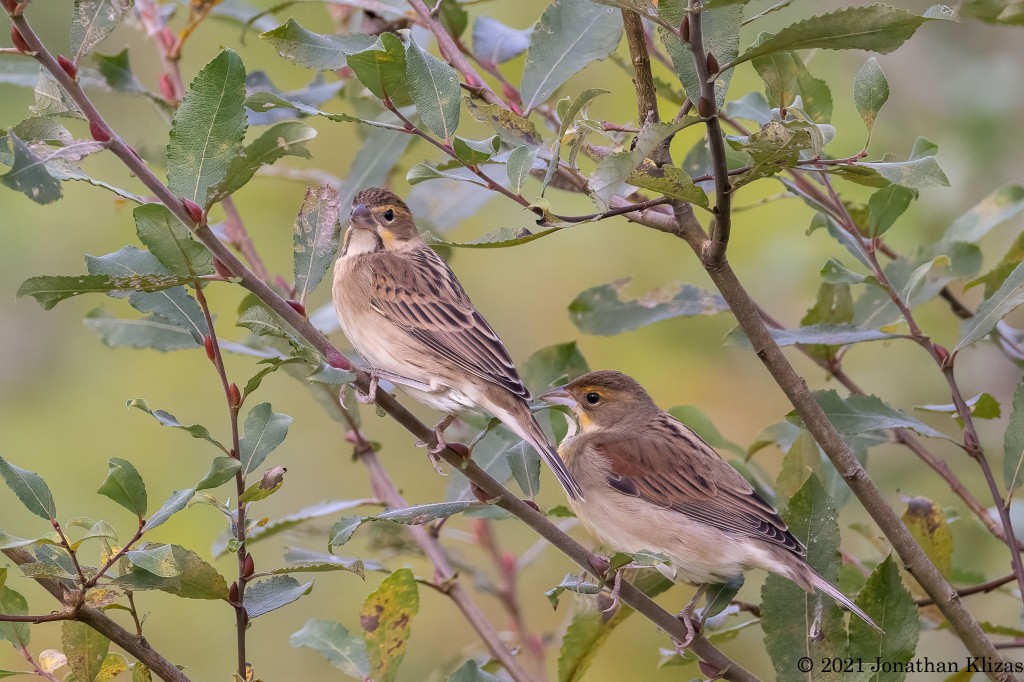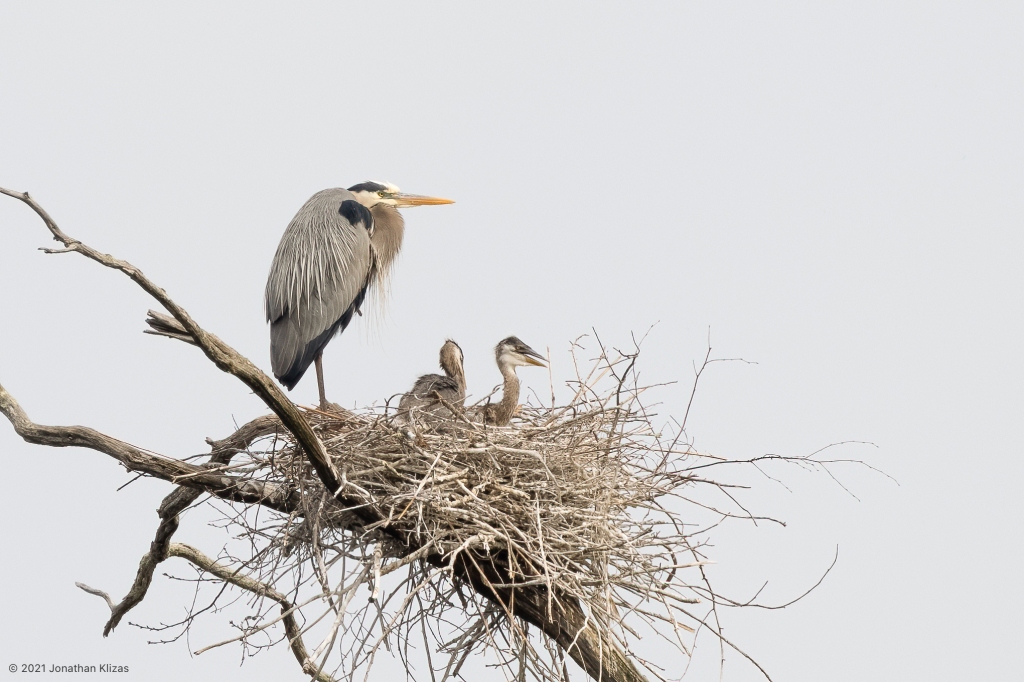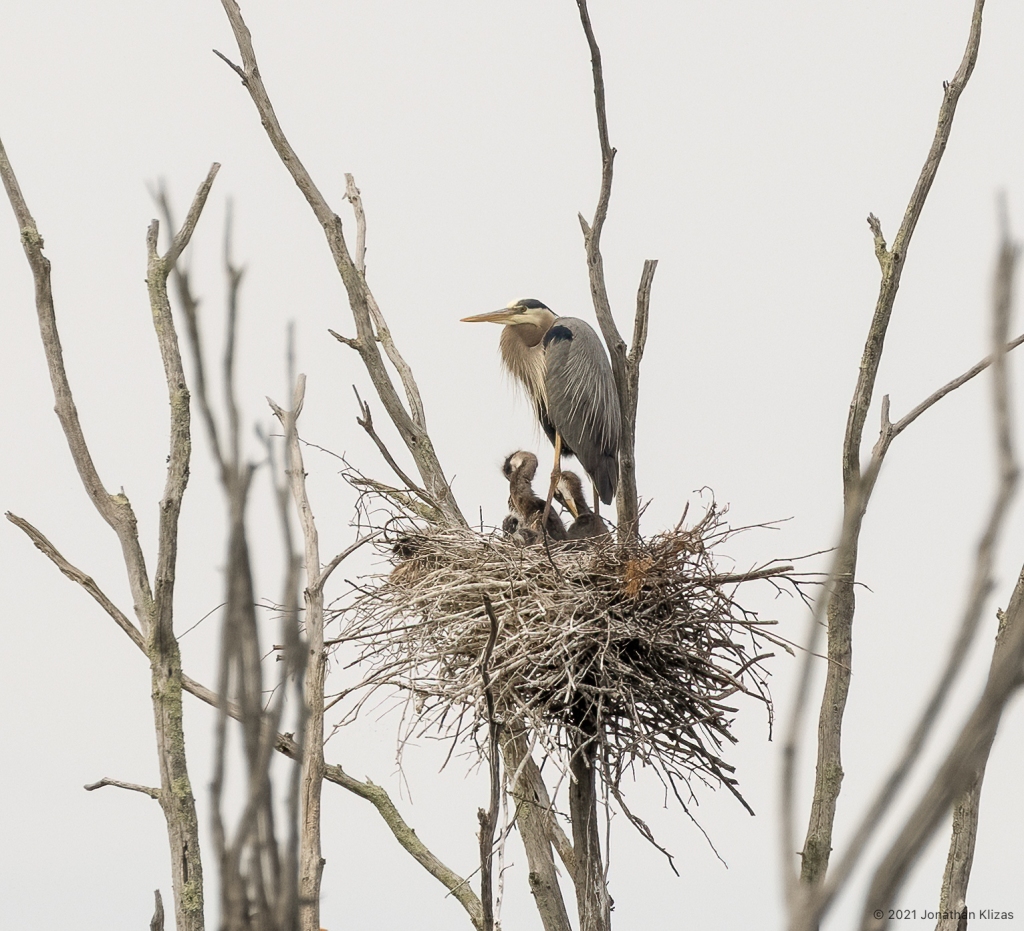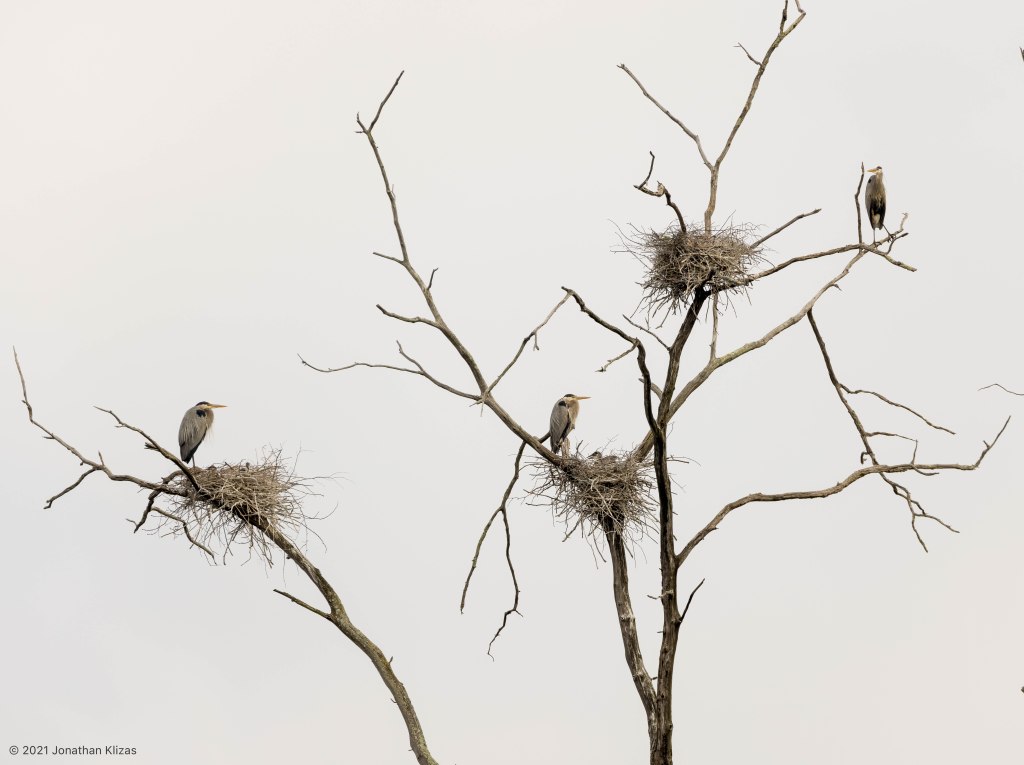The 88th annual Boonton Christmas Bird Count (hereafter, Boonton CBC and/or BCBC) took place on Saturday, December 23, 2023. Temperatures ranged from 26°F at 5:30 AM rising up to 45°F in the afternoon. The day was overcast with little wind and no thermals. Bodies of water were open except in some cases where a paper thin layer of ice prohibited any waterfowl. The previous weekend’s rainstorm created flooded conditions for low-lying areas making some areas inaccessible. Mild weather through the autumn and early winter seasons created some interesting developments such as robust totals for some species and not so robust for others.
Most importantly, a huge warm thank you to all of the 37 participants in 15 parties for your enthusiasm and energy in making this endeavor possible. Please forward this to anyone you think may be interested.
91 species were reported along with four count-week species (so far). The average for the previous 10 years is…90.9. The 88-year average is 82.4.
A list of the species found on this CBC is at the following link: https://mocosocobirds.com/birds-of-morris-county-n-j/boontoncbc/species-list/ Species seen on the 2023 count are marked with an asterisk or cw if they are a count-week species.
For your information, the count-week species are Horned Grebe, Double-crested Cormorant, American Kestrel, and Red-breasted Nuthatch.
21,192 individual birds were tallied. This is the second highest total since 2016 but 1,600 lower than the ten-year average and 3,900 lower than the 21st century average. On the bright side it is 4,600 greater than the 88-year average.
1,476,981 individual birds have been counted in the 88 uninterrupted years of the Boonton CBC. Somewhere, Floyd Wohlfarth and Irv Black are smiling.
Highlights for this year’s Boonton CBC are as follows:
8 species reached new high totals or tied a previous high despite some parties reporting lower than usual numbers. 48 species had totals greater than their 21st century averages.
- 244 Buffleheads broke the previous record of 221 in 2006.
- 132 Turkey Vultures are better than 128 in 2021. The Great Piece Meadows team finding a roost greatly helped.
- Peregrine Falcons had a record 6 doubling the previous record of 3 in 2021 and 2011.
- Barred Owls tied their record of 5 also reached in 2000, 2004, 2005, and 2012.
- Yellow-bellied Sapsuckers, a recent addition to the breeding species of Morris County, came in with 23 individuals, beating the 17 found in 2021. Sapsuckers were first reported on the Boonton CBC in 1970 with usually 1 or 2 reported until the mid-1990s when increasing totals became the norm. This also coincides with the first known nesting of the species in Sussex County. The past three years have seen 17, 16, and 23 tallied respectively, a virtual explosion.
- Carolina Wrens totaled 135 sneaking past the 130 found in 2020.
- Winter Wren – 28. The previous high was 23 in 1998. Another wren showing an upward trend. 2022 was a blip when only 4 were reported but 2019-21 had 19, 22, and 20, the strongest continuous showing in the 88 years of the CBC. 2023 continues that trend.
- 9 Gray Catbirds set a new record. The previous high of 7 was in 2021 and 1996.
Other highlights
- An Orange-crowned Warbler at Bee Meadow Park is a highlight of this year’s count. It is the 5th in the 21st century and 13th overall in 88 years.
- 2 Cackling Geese make it three years in a row for this species.
- 4 American Wigeon slightly reverses a downward trend as in being missed 4 of the previous 6 years.
- 198 Ruddy Ducks is the most since 260 in 2015.
- Lesser Scaup numbers fluctuate greatly year-to-year but 47 is the most since 62 in 2012.
- 2 Common Loons are the first since 2013, other than a count-week record in 2017.
- 34 Great Blue Herons is the highest since 47 in 2011.
- 4 Virginia Rails at Troy Meadows is a tribute to the effort of Jeff Ellerbusch.
- 13 Cooper’s Hawk continues an upward trend for this species.
- The same can be said for Red-shouldered Hawks at a modest level. 7 reported this year continues a pattern for the past six years of an increase.
- 682 Mourning Doves is the most since 735 in 2004 and doubles most tallies in the previous six years. The high count was 863 in 1973.
- 27 Eastern Screech-Owls is the most since 29 in 2004. 48 was the high count in 1975.
- All woodpecker numbers were up except for only 1 Red-headed Woodpecker found at Troy Meadows.
- 297 Fish Crows outnumbered American crows by 5! This has never come close to happening before. Fish Crows were not regularly found on the CBC until the 1990s. Three parties accounted for 95% of the total. Fish Crows like hanging out with Fish Crows.
- 39 Golden-crowned Kinglets is the most since 46 in 2000 but falls far short of the record number of 122 in 1992.
- 14 Hermit Thrushes is the highest total since the record count of 31 in 1976.
- 2 Common Yellowthroats make it three out of the last five years for this species after not being found since 2004.
- A surprising 249 Rusty Blackbirds is the most since 291 in 2011. Most were found by the Essex party.
- 53 Cedar Waxwings is an improvement over 2022’s zero.
- 7 Purple Finches is the most since 14 in 2008.
Other News:
- Duck numbers were down across the board but that can be attributed to a lack of a freezing pattern north of the region.
- Where have all the turkeys gone? Only 1 was reported. Wild Turkeys have been annual since 1988. 2018 also only had 1. This continues a declining trend for this species.
- 19 Black Vultures. The second year in a row with relatively low numbers. Avian flu casualties?
- Another poor showing for Red-tailed Hawks with 46. 100+ was the norm in the 1990s and even as late as 2008 when 109 was the total. The high count was 138 in 1995.
The following species were seen by one party only, an indicator of how fragile the total species count of a CBC can be. The species column is followed by the amount reported. The third column represents the percentage of occurrences in the 88-year history of the count.
| Species | Total | % of years on BCBC | Comments |
|---|---|---|---|
| Cackling Goose | 2 | 6.8% | Three years in a row. First recorded in 2008. |
| American Wigeon | 4 | 80.7% | Formerly an annual, seen only four times in the past nine years. |
| Lesser Scaup | 47 | 53.4% | Erratic numbers through the years. |
| Common Goldeneye | 1 | 49.4% | With open water, it can usually be found somewhere. |
| Wild Turkey | 1 | 42.0% | 1983 was the first year. Every year since 1988.103 in 2000. What has happened? |
| Pied-billed Grebe | 1 | 77.3% | Fluctuating numbers. |
| Virginia Rail | 4 | 40.9% | Milder weather. |
| Killdeer | 1 | 63.6% | The only shorebird on this year’s CBC. |
| Red-headed Woodpecker | 1 | 47.7% | Cyclical species. |
| Marsh Wren | 3 | 39.8% | Probably more common in winter than realized. |
| Orange-crowned Warbler | 1 | 14.8% | Apparently a good season in 2023 for this species. |
| Common Yellowthroat | 2 | 26.1% | Three times in the past five years after not recorded since 2004. |
| Chipping Sparrow | 1 | 28.4% | Slightly more regular in recent years. |
| Savannah Sparrow | 1 | 72.7% | Another species formerly more common and becoming less so. |
The following table shows notable species missed in 2022 that appear in more than 50% in the history of the Boonton CBC.
| Species | % of years on BCBC | Comments |
| Northern Shoveler | 52.3% | Second miss since 1988. |
| Canvasback | 59.1% | Not a good year for waterfowl. |
| Ruffed Grouse | 58.0% | Old story, not since 2006. |
| Rough-legged Hawk | 53.4% | Not since 2010. |
| Wilson’s Snipe | 62.5% | Simply less common than in days of old. |
| Great Black-backed Gull | 63.6% | Less frequent in recent years. |
| Long-eared Owl | 59.1% | Formerly a regular find, now rare on the CBC |
| Pine Siskin | 55.7% | Surprising since there were scattered reports during the autumn. |
Historical Items
Below is the list of species occurring in all 88 years of the Boonton CBC. This has not changed since 2018:
- American Black Duck
- Mallard
- Red-tailed Hawk
- Downy Woodpecker
- Hairy Woodpecker
- Blue Jay
- American Crow
- Black-capped Chickadee
- Tufted Titmouse
- White-breasted Nuthatch
- Brown Creeper
- European Starling
- American Tree Sparrow
- Song Sparrow
- Swamp Sparrow
- White-throated Sparrow
- Dark-eyed (Slate-colored) Junco
- Northern Cardinal
- American Goldfinch
- House Sparrow
Here is the Top Ten of the number of individuals for all 88 years of the count. 1,476,981 individual birds were counted uninterrupted from 1936-2022. The only change in the rankings is that White-throated Sparrow has moved ahead of Ring-billed Gull.
| Species | Total Individuals (88 years) | |
| 1 | European Starling | 217,041 |
| 2 | Canada Goose | 184,020 |
| 3 | Common Grackle | 135,552 |
| 4 | American Crow | 127,049 |
| 5 | Mallard | 66,168 |
| 6 | Dark-eyed (Slate-colored) Junco | 59,979 |
| 7 | American Tree Sparrow | 53,781 |
| 8 | Red-winged Blackbird | 45,022 |
| 9 | White-throated Sparrow | 41,053 |
| 10 | Ring-billed Gull | 40,817 |
The 89th Boonton CBC for 2024
The Boonton CBC is traditionally held on the second Sunday of the Christmas Count period. With that in mind, we will schedule the 89th Boonton CBC on Sunday, December 22, 2024.
You can also access the summaries of the years 2012-2023 through the Birds of Morris County > Boonton Christmas Bird Count menu item on the mocosocoBirds.com web site.
A peaceful and healthy 2024 to all!
Jonathan Klizas
Compiler, Boonton CBC
www.mocosocobirds.com
Nature and Art, nothing else matters.

